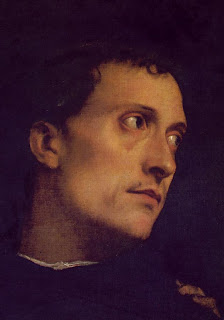Titian is considered to have been the greatest
16th-century Venetian painter, and the shaper of the Venetian coloristic and
painterly tradition. He is one of the key figures in the history of Western
art. Titian, whose name in Italian is Tiziano Vecellio, was born in Pieve di
Cadore, north of Venice, by his own account in 1477; many modern scholars
prefer to advance the date to about 1487. In Venice
Influence of Giorgione
The first documented reference to Titian dates from 1508, when he was
commissioned to paint frescoes, with the Venetian painter Giorgione, on the
exterior of the Fondaco dei Tedeschi (the German Exchange). Unfortunately, the
frescoes survive only in ruined fragments. Scholars disagree as to which
paintings dating from the first decade of the 16th century were actually
painted by Titian. Among the most important of the disputed works are the
Allendale Nativity (n.d., National Gallery, Washington, D.C.), still assigned
to Giorgione by most writers, and the world-famous Concert Champêtre (circa
1510, Musée du Louvre, Paris), once universally considered Giorgione's but now
increasingly thought to be by Titian or a work of collaboration between the
two. Scholars unanimously ascribe the so-called Gypsy Madonna (circa 1510, 
,+BERLIN.JPG)

,+1514-15,+CANVAS,+PINAKOTHEK+A.JPG)






















No comments:
Post a Comment